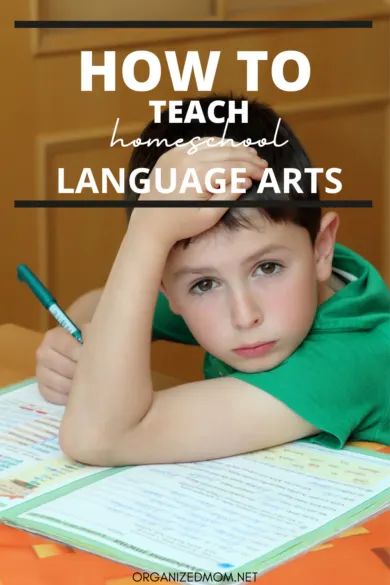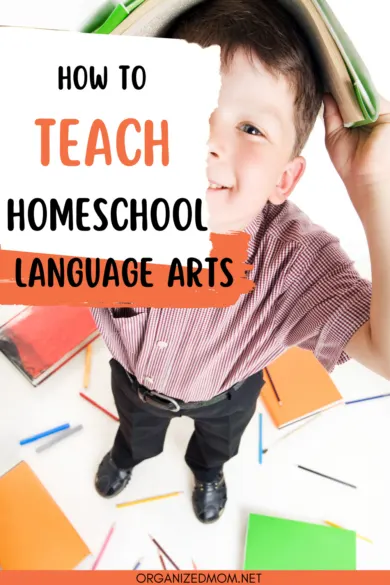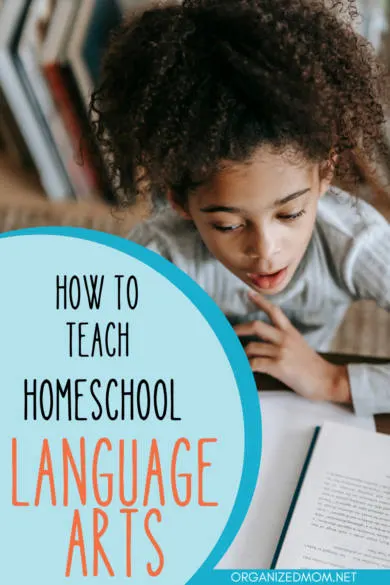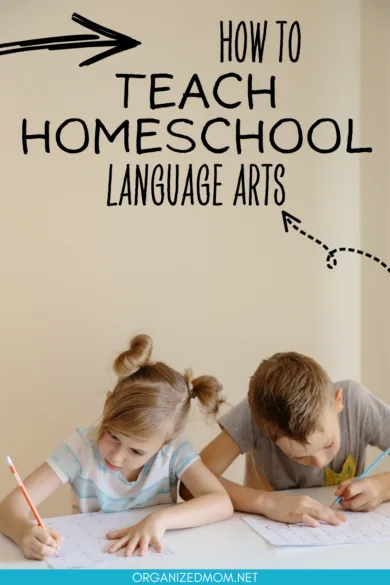Reading and comprehension form the base for learning. If your children know how to read, they have cleared the main hurdle in learning. They can understand anything they learn and apply those concepts accordingly. This is why teaching homeschool language arts are important. Language arts encompasses a lot more besides reading. You will teach your children how to write, how to spell, how to comprehend and analyze paragraphs, and how to use correct grammar.
Each parent uses different strategies when teaching language arts to their kids. For instance, the approach you use for teaching language arts to a special needs child may differ drastically because of the different circumstances. Some parents opt to use a curriculum while others improvise. The goal is to instill reading, writing, and comprehension skills in children. This article offers tips, hacks, and suggestions on how you can easily teach language arts in your homeschool.
Teaching homeschool language arts with different learning curves
Style your lessons according to your child’s learning capacity. Some children comprehend language arts faster than others. Some may seem to lag behind. Take time to learn your child’s capacity to figure out how to work with them. There is no right or wrong way for kids to learn language arts. If your child is a reluctant reader, do not stress them. Let them learn on their own time.
Teaching how to read
Kids can learn how to read without using a curriculum. The focus is to help them understand what they see and articulate correctly. Use whatever reading material you have at your disposal for this section. One of the best approaches that work well is reading loud to the kids. Let them see how your lips pronounce certain words.
When you come across a vocabulary slow down and articulate each word clearly. Always explain the meaning of difficult words you come across while reading.
Let them read loud as well. Let them make mistakes. Use positive reinforcement when correcting them when they make mistakes. Encourage them to read out loud and to ask for assistance whenever they see something they cannot comprehend.
Teaching how to write
Writing is one of the fine motor skills. They will learn how to grip the pencil and form different letters. You do not necessarily need a curriculum to teach your child how to write. Each child develops writing abilities in their own time. They may be good in other subjects (STEM) but struggle with writing. Take your time and walk them through the process.
There are several approaches you can adopt to help your child learn how to write;
- Use dry-erase boards
Kids find it fun to scribble on boards, erase, and repeat. As they gain confidence in scribbling and holding the pen, introduce symbols and the alphabet for practice. After several mistakes, they will make good progress and you can scale up everything from there.
- Use colorful writing resources
This appeals more to the kids in the elementary levels and toddlers. They love colorful stuff. The more they experiment, the more they nurture their fine motor skills. They will be creating words that make sense soon enough.
- Play writing games
Playing prewriting games helps your kids develop the confidence to write while having fun. Games such as filling in the blanks, writing birthday cards to loved ones, and tracing can help them gain confidence and enhance their writing skills. Let the kids choose what kind of games they want to play.
Teaching how to spell
The best way to have an impact while teaching your kids how to spell is to bring fun to the learning process. When you read a vocabulary out loud, spell it out, explain what it means and ask them to spell it back to you. Highlight difficult words you come across in your literature. Look out for words the child is having challenges with. For instance, words such as accommodate that have double letters can be challenging to spell. Encourage the child to repeat until they get these words right.
Whenever you come across a complex or long word such as ‘Hippopotamus’ break the word down into different parts for easier spelling. Anyone (including adults) may lose track while spelling these long words.
Spelling becomes easier when the word is broken into different parts.
For instance, you can tell the kids to break the hippopotamus into sections (say ‘hippo’ and ‘potamus’) to make it easier to keep track of the spelling. Once they spell ‘hippo’ correctly, they can proceed to spell ‘potamus’ and join the two to form a single word.
- Use visuals
Children remember what they see more than what they read or heard. Visuals (images or physical objects) can help them distinguish between words that have the same meaning or words that are pronounced the same but with different meanings.
For instance, a word such as ‘bat’ can be confusing because it has a double meaning. Show them images of both ‘bats’. Words such as ‘son’ and ‘sun’ could also be confusing to small kids before you show them images representing each word.
- Songs
Rhythm and harmony help kids internalize the words they hear and memorize them easily. Many public schools have devised songs that enable kids to memorize difficult concepts using acronyms. The same applies when teaching your child how to spell.
Sing repeatedly until the child memorizes the song’s rhythm. Whenever they forget how to spell the word, the song will come in handy to help them remember.
Teaching how to listen
Listening is also an important element of teaching homeschool language arts. Your child will be tested on their ability to listen, analyze, and remember what they heard. Here are some tips on how to teach your kids how to listen;
- Encourage the kids to ask questions
Before reading any piece of literature to your kids, encourage them to ask any questions they will have regarding what they will hear. Asking questions implies that they have thought about what they have heard and would like to learn more. Once you answer these questions you will help them comprehend and remember what they heard.
- Ask them questions
Let them know you will ask them questions about what they hear before you start reading. This will keep them on their toes and keep their listening skills focused. It is a great way of turning them into active listeners to whatever you are reading to them.
- Reward them for listening
Do not punish the kids when they lose focus when listening to your reading. However, when they answer your questions correctly reward them with encouragement and congratulatory words. You may offer them a small treat as well. Use positive reinforcement to correct them when they make a mistake
- Use simple language
Do not overwhelm the kids by using difficult words when reading- especially if they are just getting started. This might discourage them and turn them into poor listeners. Be creative in your reading style to keep them focused and attentive. Tonal variations when telling stories that have different characters work great at keeping the kids entertained and listening to every word you say.
Teaching visuals
There are two aspects here; Viewing and visual representation. Viewing deals with the understanding, interpretation, and linkage of images to certain words (spoken or written). Visually representing elements deal with the processing and presentation of information through images. Teaching viewing and visual representation help the child create meaning in what they hear using non-print texts.
How to enhance viewing skills
- Sketching – Let the child create drawings and sketches to relay their understanding of a story you just read to them. They can do so using symbols, words, lines, or shapes.
- Create concept maps – This is a graphical tool to organize concepts according to how the child related to them.
- Creating True/False statements – These statements invoke a sense of logic into what the child saw or heard.
Visually representing strategies
- Data Charts – You create a data chart and let the child complete it by adding sentences or pictures in different cells to represent information according to their understanding of what they saw or heard.
- Maps – Maps with keys, scales, and compasses can relay visually representing information.
Recap
Learning the six elements of language arts will set your child up for success in whatever field they decide to explore. These language elements form the basis of reading, writing, and understanding comprehension. Teaching homeschool language arts can be fulfilling if you let the child lead you. Do not rush. Each child has a specific learning curve and when one takes longer than the other it does not mean they are unintelligent. Reading is enhanced by reading comprehension loud. Spelling skill is enhanced by letting the kids have fun and breaking difficult words into sections. Writing is part of fine motor skills that can be enhanced via repeated tracing exercises. Visual and visually representing are the visual elements of language arts. They represent the child’s ability to analyze what they see or read and logically present the information. Schedule different lessons and focus on one skill in every lesson to achieve your homeschool language arts goal.




